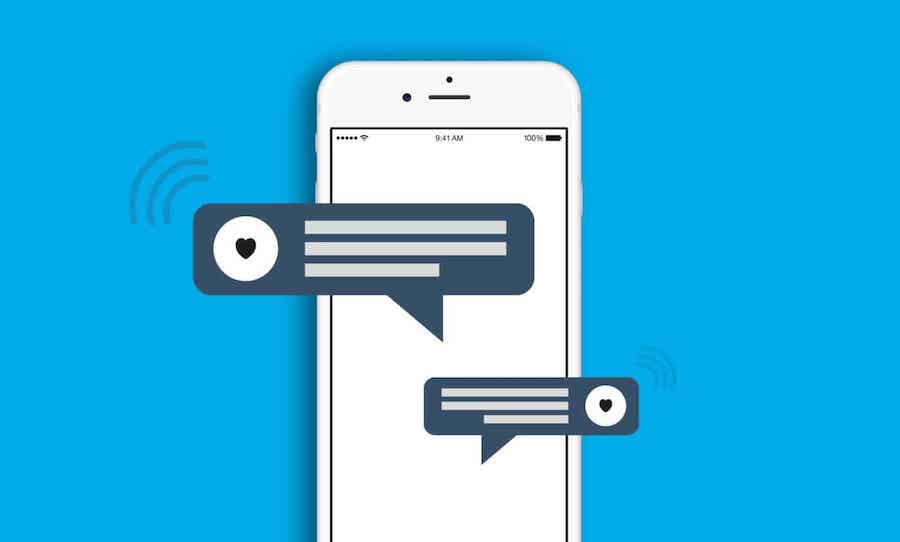10 ways to improve push notifications

Improving push notification performance is perhaps not high on your to-do list. Perhaps you are spending more time on App Store Optimisation (ASO) to increase app downloads. But, if you’re spending time (and money) getting more app users, you need to improve their user experience with a good push notifications strategy. You might think that having a push notification strategy is simply enough to increase app retention rates.
However, implementing push notifications are just the beginning of your mobile marketing journey. Like any mobile marketing, and like ASO, you need to analyse the performance and optimise the push notification campaigns.
So, whether you already manage push notification services for your clients, or would like to start providing this service, here are 10 ways from the Kumulos mobile marketing automation team to improve push notifications.
- Segmentation is top priority
- Use channels to give you a receptive audience
- Automate push using geofencing
- Use rich notifications to increase open rates
- Add dynamic content to messages
- Use the ideal length for push notifications
- Time it perfectly within the user journey
- Send the right amount of push notifications
- Create a sense of urgency or FOMO!
- The importance of A/B testing your push campaigns
Segmentation is top priority
According to Business of Apps Push Notification Statistics, there is a good trend for mobile marketers sending segmented push notifications. This is of course instead of broadcast messaging.
When it comes to segmentation, you should build audience segments to target specific users of your app by applying filters to data captured from the install, such as location (e.g. country and city), operating system (e.g. iOS or Android) and the version of the app (e.g. to encourage users to update).
You might wonder how to do this easily when you have thousands of push notification subscribers? If your push notification service has the ability to create segments, like Kumulos does, then it is easy.
Use channels to give you a receptive audience
Channels allow your users to subscribe to content based on their preferences. By defining either portal visible marketing groups or allowing your app to create private or public groups, channels allow you to target content at a receptive audience.
When you’ve built your segment, you can use channels to categorise the content you send and let users subscribe to content relevant to them.
Automate push using geofencing
When geotargeting is used, not only do we see an increase in open rates but also conversion rates. With Kumulos, you can define Geofences to target installs within a specific area or within a certain radius of a fixed point on a map (e.g. within 1000 metres of a retail outlet that is running a promotion).
Basically, geofencing allows you to specify a location radius so that when the app user enters or leaves, it triggers an automatic push message. However, don’t forget to use segmentation and channels as part of your geofencing strategy.
And, this gets even cleverer, when you start to create a proximity marketing campaign. Proximity marketing, or location-based marketing, is when you can interact with app users in real time. Location based marketing uses geofencing to automatically send a push notification when a user enters or leaves a specific location.
With Kumulos push notifications, you can manage campaigns triggered by geofences or beacons. You can then automate geotargeting campaigns, using rules to send push notifications to subscribers when they enter, exit, linger in a geofence or are near beacons.
You can use simple radial geofences or easily define complex multi-point polygon geofences to build accurate boundaries to trigger your automation. Campaigns can run indefinitely or for a limited time. What’s more you can preload campaigns in advance and use in conjunction with channels and segments to notify the exact, target audience for that campaign.
Use rich notifications to increase open rates
You can apparently increase open rates by up to 56 per cent if you use rich push notifications. You might ask what is a rich notification? It’s simply a push campaign with an attachment which is rich media. So, in addition to the characters in the notification, you can include images,
video, audio and other interactive assets. Add deep linking, URLs, rich push features like emojis and more.
According to Business of Apps Push Notifications Statistics, emojis can increase reaction rates by 20 per cent.
Add dynamic content to messages
Dynamic content is content for a message that’s tweaked based on known information about the targeted app user. Basically, anything that you have captured as a Profile attribute within the app can be used as dynamic content. For example, if you know a user searched for Bluetooth headphones the last time they used your shopping app, you can mention Bluetooth headphones in a push notification.
Use the ideal length for push notifications
When it comes to the number of characters, it really depends on the type of message. According to research, 90 characters is the ideal to get clicks. However, for offers it’s best to keep them to 20 or 25. There’s actually a guide to push notification length by industry over on Business of Apps. The stats show that if your app is in entertainment or travel you can get away with longer messages. However, when it comes to education, training or coupons it’s best to keep it short.
Time it perfectly within the user journey
Push notifications can work better when sent during certain phases of a user journey. Intelligent campaign scheduling will help you improve the success rate of your messaging.
Should you wait until a certain point in the user journey before sending a push? Some stats point to the fact that you should wait until between four and six sessions, but it depends on the type of app.
Send the right amount of push notifications
Like anything in marketing, sometimes it takes a few attempts to attract the attention of your target. But then the law of diminishing returns kicks in. If you send too many notifications, you risk people disabling notifications – which is one of the dangers of using push notifications too much. You also risk bad reviews and are in danger of frustrating app users who don’t know how to change their notification settings easily.
Create a sense of urgency or FOMO
Nowadays, people have a fear of missing out (FOMO) and you can use your push notification strategy to create a sense of urgency when it comes to re-engaging with the app.
So, if you’re looking to create strong engagement, are there certain words you should use? Words suggesting urgency are good…such as ‘soon’, ‘limited’, ‘don’t miss’. Also, action words are generally good such as ‘explore’, ‘enjoy’.
The importance of A/B testing your push campaigns
A/B testing is straightforward. You start with a message, message A, and change one variable in it, to create test message B, and push it out to similar segments of your user base, ideally selected at random. The variable which you change could be a word in your copy, the image you use if you are using rich notifications, the percentage off on an offer, or the timing when a user receives the message.
Afterwards you can analyse the data and conclude which message was more successful and use this information for future campaigns.
Improve your push notifications today
So, there’s 10 ways you can improve your push notifications. From segmentation to using channels and geofencing there are so many ways to better target your messages. And, when it comes to the content, using rich content, dynamic content and getting the timing and frequency right will really help. Finally, don’t forget the A/B testing!
___
source: MobileMarketing

